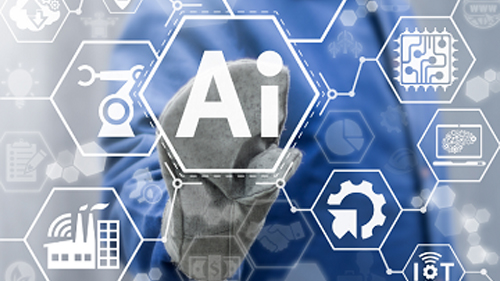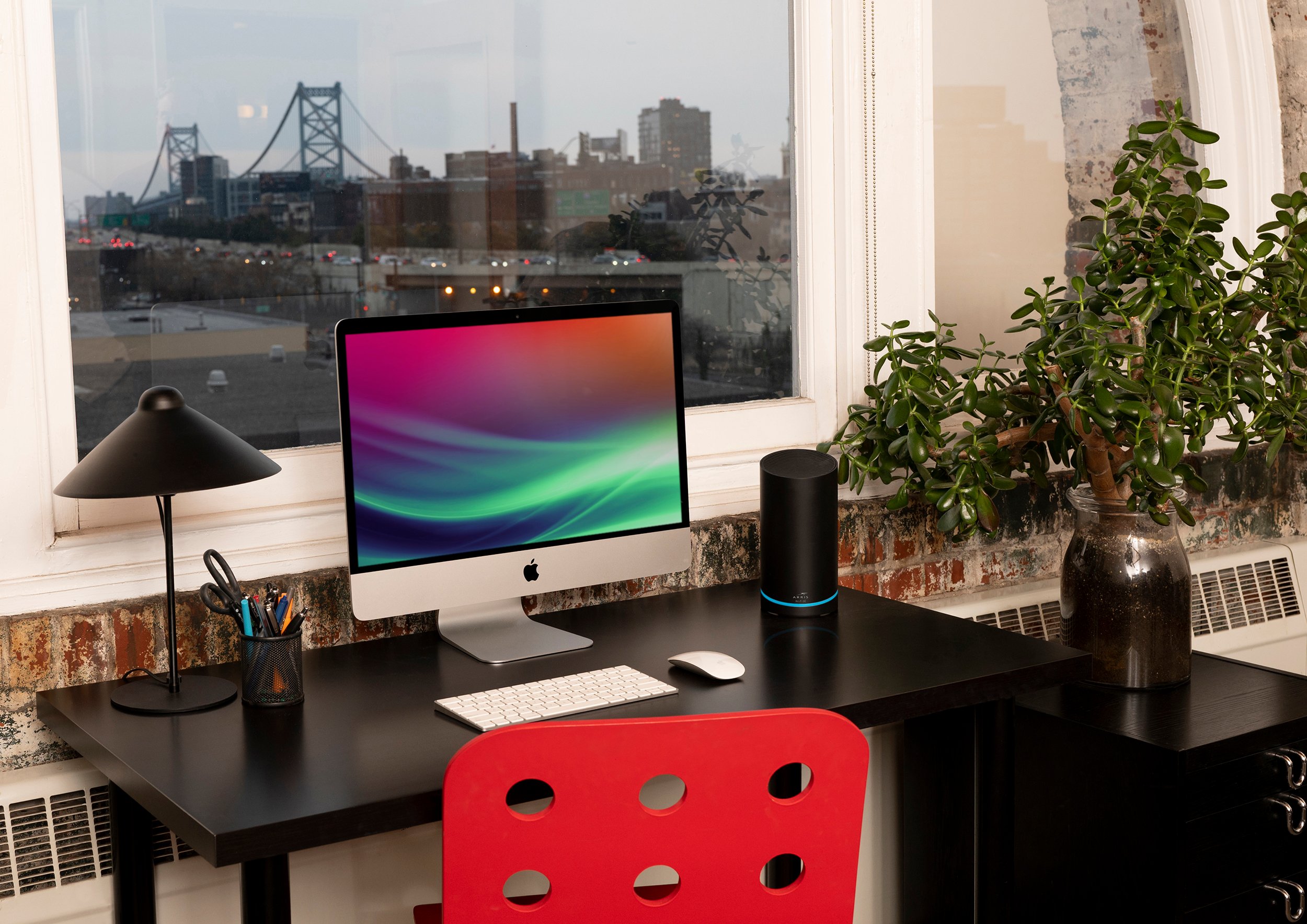In a recent interview with Euromedia magazine, I offer insights into the evolution of the AI-powered connected home and all that the future has in store.
Q1. Will CPE become an intelligence point within the home by hosting the household AI? If so, what functions will AI perform?
Edge computing in the gateway is becoming increasingly important to improving the overall customer experience, reducing cloud costs, and minimizing latency. Initiatives underway in both the prpl Foundation and RDK-B have created new gateway software stacks that support the addition of cloud-to-edge services through downloadable container solutions that can maximize the use of CPU, memory, and lower latency capabilities in the device.
The gateway is the first stop in the service request path from the home, so it is able to identify the type of connected device and the services/applications originating or terminating on the device. The gateway’s capacity to understand what services the home is requesting and consuming creates a new level of service-aware connectivity.
For example, the ability to control the speed, latency, and jitter to the service is improved when the task is allocated to schedulers and policies in the home gateway. Prior to this capability, it was common for all information to be sent to the cloud to process and then send back the resulting data or to trigger actions. The additional computing that now exists in home gateways (over 30K DMIPS) will allow local actions to work with the cloud to create local AI-driven learning models in the gateway — improving the computing costs, while reducing the data ingested into the cloud. Why send all the telemetry from the home to verify performance on applications and services consumed when this could be done locally? Managing these tasks on the gateway and only sending anomalies or exceptions to the learned models creates a more efficient process. There is the potential for the gateway to use AI to learn the behavior of the home connectivity and the service requirements and then optimally map the quality of service (QoS) across the access network, Wi-Fi, and IoT connections for these services.
Additionally, we’ve promoted that the set-top should evolve into a more comprehensive smart media device (SMD) — providing voice inputs to TV visual outputs. The TV remains one of the most underutilized screens in the home — and as with the rise of Amazon Show, Facebook Portal, and other visual smart assistant devices — the integration of generative AI to the TV visual plane will become progressively compelling. There’s increased feasibility to have virtual Jarvis-like home assistants that visually manifest themselves on the TV as a portal to the new resources that generative AI and large language models (LLMs) can now bring to the screens. It is easy to predict the move of home network and IT support to a more self-healing model using deeper knowledge of the home environment and to utilize voice-enabled virtual avatar assistant models vs. today’s text-based Chatbots.
All that said, the CPE will be an extension of the larger cloud-driven AI service to the home. The gateway edge computing and other devices like the TV/Set-top/SMD will be as part of the overall AI engine and learning models that understand home devices, applications, and connectivity. They will work together to leverage the lower network latency, secure local in-home DMIPS and storage.
Q2. How will AI help hyper-personalize services to optimize content selection and engage customers?
AI is already able to perform detailed analysis to identify real-time patterns in network and device data. From a home network and user experience perspective, this ability allows AI to recognize distinct ways consumers are using applications and services in the home. Companies like NVIDIA are already utilizing the capabilities of AI at the device level, through the network, and into the cloud to elevate the user experience and quality of services from end to end.
At the moment, we tend to throw bandwidth and speed at the consumer to serve their digital life and requirements. The next phase in home connectivity is to understand what the service needs to perform optimally — from its Wi-Fi QoS requirements to its jitter and latency tolerances and roundtrip latency window from source to sink. If a solution can understand this and then apply the correct QoS parameters across a service-aware network, then a consumer does not need to know what speed they purchase from their SP; rather, simply that the network (driven by AI) is making sure that optimal quality of service is being given to their applications.
It is feasible to go beyond the understanding that a gamer is now playing a game and needs a low latency QoS to deeper home insights, but it takes us further in considering consumer privacy. We are used to today’s platforms like YouTube, Instagram, and TikTok making recommendations based on previous viewing habits, how fast we skip, or how long we stay on content — and we expect this to continue for the services that run in the home. For optimality of consumer connectivity, algorithms do today pre-empt and cache content, particularly in servers in service provider networks. So far, there has been less use of pre-positioning content in the home, closer to the consumer. Virtual reality and some high graphics content games have been leveraging some pre-positioning of potential next-frame content to minimize any latency at the expense of more downloaded content.
As we use device and service identification in the home more, there can also be additional value extracted from this (assuming the consumer opts into appropriate privacy agreements) where the types of services and devices being offered to the consumer are more appropriate for the specific customer’s need. For example, taking home size into account when offering Wi-Fi extenders (required on larger vs. smaller homes) or analyzing reliability related data using historical information, terrain, weather to determine if there is higher frequency of outages to offer wired offload to LTE/5G.
Today, for example, with some of the new location data required for the use of Standard Power Wi-Fi in the home (USA), we can also use map data to identify and correlate to particular details about the home to determine more about the connectivity needs of the consumer (house size, construction type, location to neighbors, etc.). Even the humble Wi-Fi AP can see a BSSID of a neighboring AP using IEEE 802.11k neighbor reports provided by clients — building quite a good picture of the potential for interference in Wi-Fi.
We can see a lot more potential to use AI on the information that is ‘given’ by devices wishing to participate more easily in our connected home — devices like printers, Bonjour-ready devices, AllShare, TVs, etc. to be able to tell home users what the devices support and their specifications via protocols that are easy to interchange with a home-based Wi-Fi AP.
Q3. How will AI enhance service quality within the home? What role do you foresee it in proactively maintaining service quality and how will this improve on current approaches?
As I touched on above, it’s really starting with device ID and service/app ID, and then determining how best to map QoS elements of Wi-Fi, access network, and core network to service the latency and jitter parameters of delivering this service optimally to the consumer. We are starting to create recognized tagging to prioritize low-latency services. We are moving in the right direction with the introduction of the L4S scheme to ensure that, hop to hop, we can track that this latency contract is being observed.
Q4. What role will AI play in maintaining a secure home network and protecting the household from malicious or inappropriate content? How will this be different from today’s rules-based approach? What risks are there regarding customer data and how will AI-enhanced CPE help?
From a more general security perspective, the ability to be able to learn malicious actors’ patterns and behaviors against norms is constantly being improved in both the cloud and also at the CPE level - closer to the first packet ingest. The latest Machine Learning (ML) models are driving new local templates which are pushed to the CPE device to identify the security issues at the gateway before they get deeper into the network. This has become the norm of current CPE security. As mentioned above, there is huge work being done to containerize security modules, so they can be applied easily to CPE devices running new prplOS or RDK-B stacks, plus the additional work within the stack source models themselves to provide kernel-level packet analysis at line-rate. The models are getting better and better at identifying issues using a smaller number of packets so anomalies are detected faster.
There is a massive opportunity to improve consumer privacy from rogue listeners and camera devices and to make consumers more aware of where audio or camera devices may be transmitting outside their home network.
There has been much discussion about trying to create file/data vaults for consumers that remain local to their home for sensitive information vs. relying fully on cloud storage solutions (think photographs, scans of personal documents, etc.). But these solutions also come with issues, such as lack of redundancy in the case of a home fire/flood and a lack of remote access.
Q5. Is there already a trust issue with AI and the consumer? How transparent must operators be about its use? What are the safeguards?
Convenience vs. trust is one of the scales that may tip towards convenience with younger demographics vs. older ones. When you have less to lose (like money or privacy issues) then you tend to swing more towards convenience. When you have more to lose, then you add more safeguards and trust elements. Let’s think about a home example of a virtual assistant to help manage all your connected Wi-Fi devices optimally. Using AI-based learning models it can train a specific model for your home vs a generic one, it can learn to be familiar with:
- The number and type of devices you use in the home
- The number of users of the devices and who uses the device
- What applications are consumed on the device
- The time of use and performance of the application and service
This simple set of information alone can cause trust issues. Parents can fully understand how often and how long kids are on devices and specific applications. Using these tools to monitor children on the proper use of the internet (and all the access it has) is already in place as part of parental control solutions today. But with deeper learning models and continual personalization abilities offered by AI, parental control solutions can get to even deeper levels of monitoring and control. From a parental perspective, this could be the right way to manage minors.
For an operator, they can use this information to:
- Improve the overall quality of connectivity and quality of experience to the user
- Self-repair or preempt issues (send out Wi-Fi extenders if certain performance levels dictate a better home experience)
- Support virtual, personalized additional assistance approaches to customer care
The convenience and improvement factor has to outweigh the trust issue for the consumer. But in all cases, the consumer must be made aware of the access they are allowing to get this benefit.
As we enter a new era of the AI-connected home, it is evident we have much to learn — as do our AI counterparts, but there will also be much to gain from this revolutionary technology. Stay tuned for more AI-based content, insights, and future products from CommScope Home Networks. It won’t be long before AI enhancements alter the connected home experience forever. We will be there.
Want to learn more? Connect with us today.
© 2023 CommScope, Inc. All rights reserved. CommScope and the CommScope logo are registered trademarks of CommScope and/or its affiliates in the U.S. and other countries. A list of CommScope trademarks is available at https://www.commscope.com/trademarks. All other product names, trademarks and registered trademarks are property of their respective owners. Wi-Fi is a trademark of the Wi-Fi Alliance.













